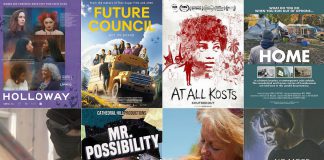
Most of us have seen road signs warning of turtle crossings, but now members of Curve Lake First Nation have signs that include their own dialect.
The signs have been installed at Curve Lake First Nation as part of a project funded by Environment and Climate Change Canada, in partnership with Otonabee Conservation and Curve Lake First Nation, to raise awareness of turtle (mikinaak) conservation.
The signs include the phase “Turtle Crossing” in English and “Mikinaak Aazhga Aatigong” in Michi Saagig, the local dialect of Anishnabemowin.
“Installing signs in areas where mikinaak have been observed crossing the roads is a simple way to remind residents and visitors to Curve Lake First Nation to be aware and take steps to avoid turtles when driving,” says Lorenzo Whetung, a member of Curve Lake First Nation who initiated the project.
Elders from Curve Lake First Nation worked together to translate the sign, with graphics for the sign provided by the Toronto Zoo Turtle Island Conservation Program.
“There are eight species of turtles in Ontario, all of which are listed as species at risk by Environment and Climate Change Canada,” explains Otonabee Conservation watershed management program manager Meredith Carter. “Reducing road mortality is an important step in the conservation and protection these important species.”
Mikinaak nesting season is from the end of May to early July. Females are vulnerable to collisions with vehicles during this time as they travel to and from nesting sites, which often requires crossing roads.
Mikinaak hatch and dig themselves out of their nest chambers from August to October and will then move to water, which may also require crossing roads — so drivers should be aware of turtles during these times as well as late spring and early summer.
Staff from the Ontario Turtle Conservation Centre remind everyone that, if you do stop to assist a mikinaak crossing the road, do so safely. Make sure you are safe from other vehicles and be sure to wash your hands after touching a turtle, as they can carry salmonella bacteria.
If you are helping a snapping turtle, only lift it from the rear end of the shell since they can bite. Never lift any mikinaak by the tail.
It is also critical to help the turtle continue in the direction it was originally heading.
This story has been updated to correct a misspelling of mikinaak in the original media release.


























